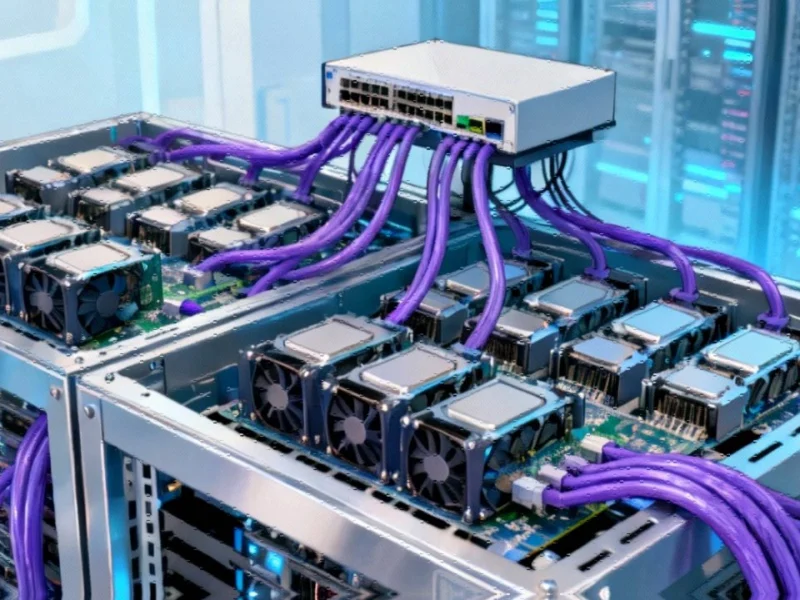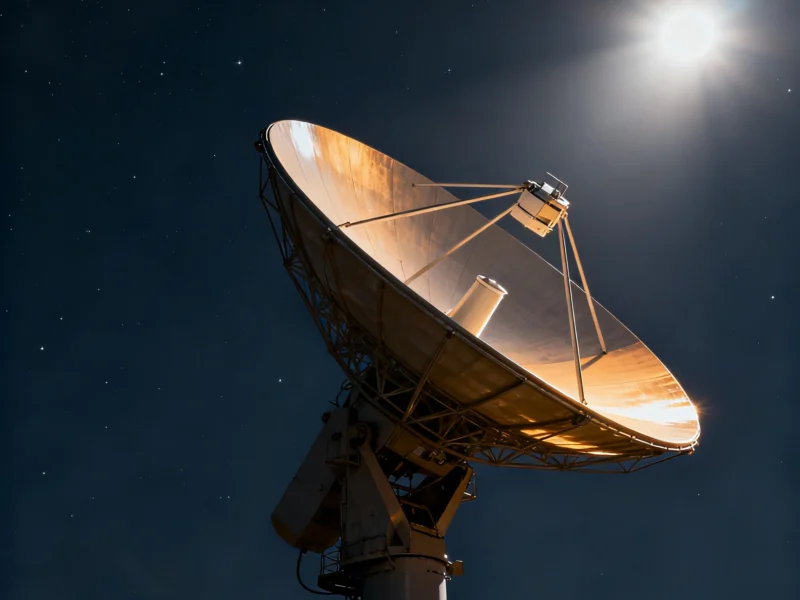Note: Featured image is for illustrative purposes only and does not represent any specific product, service, or entity mentioned in this article.
The Hidden Infrastructure Powering AI’s Explosive Growth
While Nvidia’s GPUs and OpenAI’s algorithms capture headlines, a critical component enabling artificial intelligence’s massive scaling often goes unnoticed: the humble connectivity cable. Credo Technology, a relatively obscure company, has positioned itself at the center of the AI infrastructure boom with its distinctive purple Active Electrical Cables (AECs) priced around $500 each. These aren’t ordinary cables—they’re sophisticated data highways essential for keeping AI clusters running smoothly.
The AI revolution has created unprecedented demands on data center infrastructure. Where previous servers typically featured one or two processors, today’s AI systems can host up to eight processors per server, with the most powerful AI models requiring millions of GPUs working in concert. This explosive growth in computational density has turned what was once a peripheral consideration—interconnect technology—into a critical bottleneck and opportunity.
Why AI Clusters Demand Better Connectivity
Each GPU in an AI cluster requires its own dedicated connection to network switches that route data throughout the system. As Nvidia’s systems have evolved from 72 GPUs to next year’s planned 144 GPUs per rack—with Kyber racks promising 572 GPUs by 2026—the connectivity challenge has multiplied exponentially.
“In the past, Credo’s opportunity was one cable per server, but now Credo’s opportunity is nine cables per server,” noted Alan Weckel, an analyst at 650 Group. This dramatic increase explains why Credo has captured an estimated 88% of the AEC market, competing with companies like Astera Labs and Marvell.
Meanwhile, industry developments in semiconductor manufacturing are creating even more powerful chips that will further drive demand for advanced connectivity solutions.
The Technical Edge: AECs vs. Traditional Fiber Optics
What makes Credo’s purple cables special? Unlike traditional fiber optic cables powered by components from companies like Broadcom and Coherent, AECs incorporate digital signal processors on both ends that use sophisticated algorithms to extract data from the cable. This technology enables much longer cable lengths than traditional copper alternatives—Credo’s longest AEC stretches seven meters while maintaining signal integrity.
Credo CEO Bill Brennan emphasizes reliability as the key advantage. “Customers are trying to avoid what’s called a ‘link flap,’ where one part of an AI cluster goes offline because the optical cable connecting them fails, costing hours of pricey GPU time,” Brennan explained. “It can literally shut down an entire data center.”
The importance of reliable infrastructure becomes even clearer when considering related innovations in data processing across scientific fields, where uninterrupted computational power is equally critical.
Strategic Positioning in the AI Ecosystem
Credo’s growing influence stems from its early engagement with hyperscalers during the planning stages of massive AI clusters. As data center designs become denser, allowing more servers to be connected by shorter cables, Credo’s technology has become increasingly essential.
“When you connect with these hyperscalers, the numbers are very large,” Brennan noted, though the company doesn’t publicly name clients. Industry analysts have identified Amazon and Microsoft as customers, with Amazon Web Services CEO Matt Garman recently posting a LinkedIn image of Trainium AI chip racks that appeared to feature Credo’s distinctive purple cables.
This strategic positioning reflects broader market trends where component suppliers are becoming increasingly important in the technology ecosystem.
The $75 Billion Networking Opportunity
The stakes are enormous. TD Cowen analysts recently estimated that the market for AI networking chips could reach $75 billion annually by 2030. This massive opportunity has attracted major players including Nvidia and Advanced Micro Devices, both of which maintain their own networking businesses and possess significant influence over which technologies get integrated into their systems.
As Brennan told investors in September: “Every time you see a new announcement of a gigawatt data center, you can rest assured that we view that as an opportunity.” This perspective highlights how infrastructure providers see the AI boom—not just as a software revolution, but as a physical building challenge.
The competitive landscape continues to evolve, with recent technology security incidents reminding companies across the sector about the importance of protecting their intellectual property and supply chains.
Future Outlook and Market Dynamics
Credo anticipates that three or four customers will each account for more than 10% of revenue in coming quarters, including two new hyperscale customers this year. This concentration reflects both the scale of AI infrastructure investment and the specialized nature of high-performance connectivity solutions.
The company’s visibility continues to grow within the industry. At a recent data center professional conference in San Jose, Credo presented alongside Oracle Cloud representatives, while a display of Meta-designed Nvidia GPU racks prominently featured the company’s purple cables.
As purple connectivity cables emerge as critical components in AI infrastructure, Credo’s story illustrates how specialized hardware companies can achieve outsized importance in technological revolutions. While AI models and applications capture public imagination, it’s often the unglamorous infrastructure components that determine whether these systems can scale effectively and reliably.
The AI networking market represents one of technology’s most promising frontiers, with every major player targeting this space. As data centers continue their exponential growth to support increasingly sophisticated AI models, the companies providing the connective tissue between computational elements may well determine the pace and scale of artificial intelligence’s continued evolution.
This article aggregates information from publicly available sources. All trademarks and copyrights belong to their respective owners.



